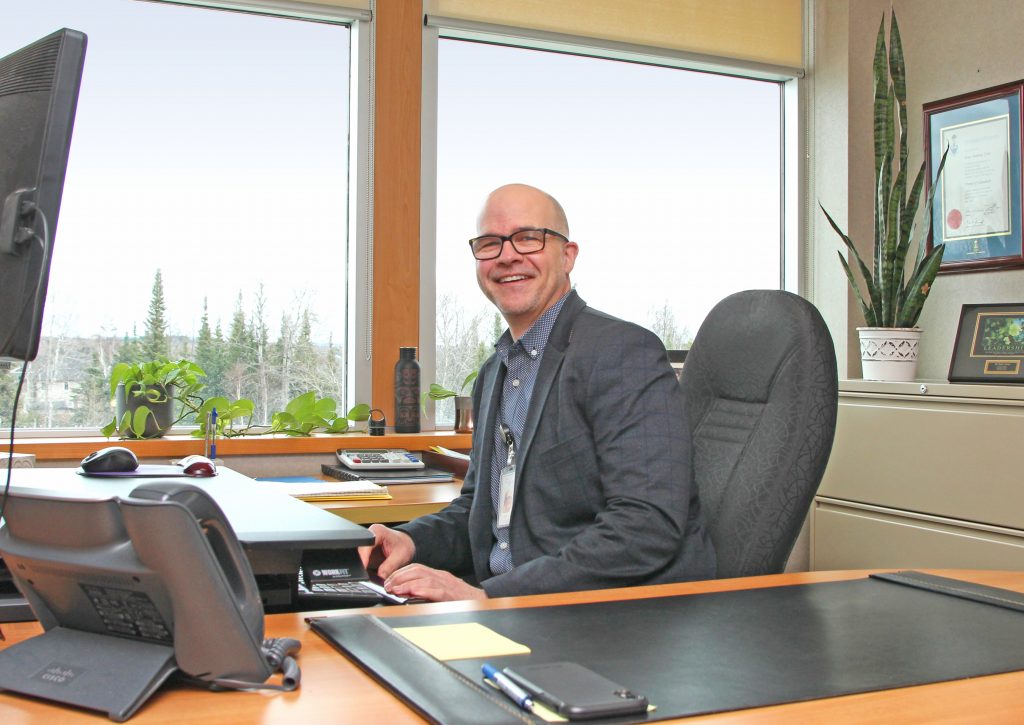Preparing for What’s Next
by Matt Prokopchuk
 Dr. Peter Voros.
Dr. Peter Voros.Q&A with Thunder Bay Regional Health Sciences Centre’s Dr. Peter Voros
(Originally published in the May 2021 edition of The Walleye Magazine)
As of this mid-April writing, the active number of COVID-19 cases in the Thunder Bay district continues to drop (although, as we’ve already seen, that can change quickly), while areas in southern Ontario are again seeing numbers spike as the pandemic’s third wave takes hold. The city saw its own surge in cases—and deaths—as part of a second wave in March. It’s those circumstances that Dr. Peter Voros is ultimately in charge of navigating at the Thunder Bay Regional Health Sciences Centre. Voros is an executive vice president at the hospital, and was recently tapped to replace Dr. Stewart Kennedy as the incident manager for the hospital’s COVID-19 incident management team—effectively the one in charge of how the hospital responds to the pandemic. We spoke with Voros about what his top priorities are, how patients were transferred out of the local intensive care unit during the second wave, and how the hospital has had to keep flexibility in mind in all decision-making.
The Walleye: What are your top priorities in your current role?
Peter Voros: We’ve come through wave two, we’ve managed that well. The key pieces through wave two for us at the hospital were the increasing requirements in our intensive care unit [ICU] and the number of COVID-positive patients that we had to manage in the building, so we had to re-create our COVID unit and expand it much larger than we did during wave one. Things have fortunately improved in our community and our hospital, so we’re really focused on ensuring we have ramped some surgeries back up to make sure we’re starting to clear that backlog, and also preparing for wave three. We are aware that throughout wave one and two, Thunder Bay was several weeks behind southern Ontario, and we’re seeing full wave three occurring in southern Ontario, so part of what the team is focusing on is what does that mean for us, or what could it mean and being prepared for whatever might come our way.
TW: During wave two, were patients transferred from TBRHSC to other hospitals?
PV: ICU patients being either diverted (which means they’re in a regional hospital and they’re supposed to come here, but instead they send them somewhere else) or patients who are in the ICU being transferred to another ICU—those decisions are actually made provincially at the critical care command centre. They monitor ICUs throughout the province, and move patients accordingly to ensure that no one ICU becomes overwhelmed. So that’s going on in southern Ontario right now, because, as we’ve seen in the media, there are a lot of patients in the ICUs in the province. We were in that position in March. We’re not in that position right now, but should our numbers in ICU and our COVID numbers, particularly, increase, we would take direction through the critical command centre to determine which patients needed to move, and where they need to go.
TW: The region saw a relatively large number of deaths during wave two. What was dealing with that like for your staff?
PV: We absolutely did have people die of COVID-19 in the hospital while we were caring for them. Death in a hospital is always a tough situation, but it is extremely tough during a pandemic. We saw staff have to deal with that situation and it’s not easy. You know they’re watching people becoming very, very sick. This is a serious illness and […] and with each one of them, we see staff really struggling to manage and accept what’s going on, and we try our best to support the staff through that. Unfortunately, throughout the world right now, as health-care providers, this is what the world is dealing with. Many patients come through it and they get well again, but there are those that die.
TW: How important has flexibility been for the hospital in terms of managing COVID?
PV: The hospital being able to be nimble and flexible has probably been our saving grace throughout the past 13 months—whether it was in wave one, when the province would give direction on things that needed to change and we would have to change those things (sometimes between morning and afternoon), or dealing with very serious situations like the numbers of COVID-positive people in our community and our hospital in wave two. The real heroes through all this for me are the staff, because when we talk about flexibility, it’s one thing for me to sit from my office and say ‘okay, open a COVID unit in 36 hours’; it’s a whole other [thing] to actually do it. And that’s the flexibility and the dedication of the staff, right from your front-line healthcare staff—your doctors, your nurses, your social workers—to the housekeepers, to the maintenance people, to the IT people who have to get on to that unit and prepare it to open and change it. And they do it, literally in 24 to 36 hours.
This interview has been edited for length and clarity.